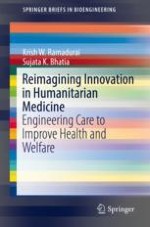2019 | OriginalPaper | Buchkapitel
3. Frugal Medical Technologies and Adaptive Solutions: Field-Based Applications
verfasst von : Krish W. Ramadurai, Sujata K. Bhatia
Erschienen in: Reimagining Innovation in Humanitarian Medicine
Aktivieren Sie unsere intelligente Suche, um passende Fachinhalte oder Patente zu finden.
Wählen Sie Textabschnitte aus um mit Künstlicher Intelligenz passenden Patente zu finden. powered by
Markieren Sie Textabschnitte, um KI-gestützt weitere passende Inhalte zu finden. powered by
